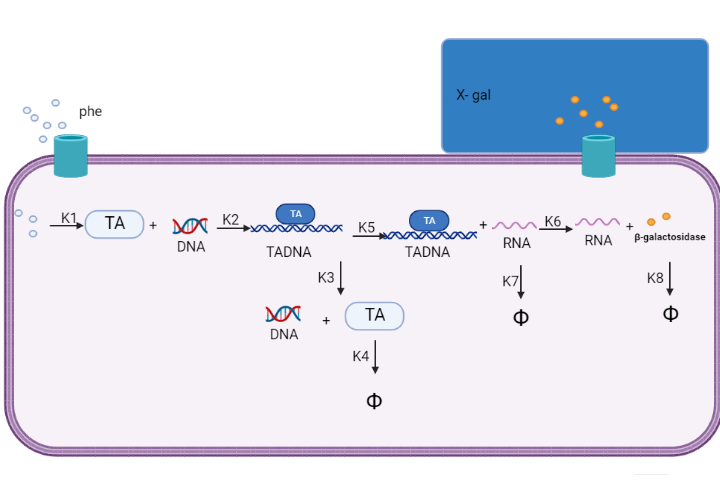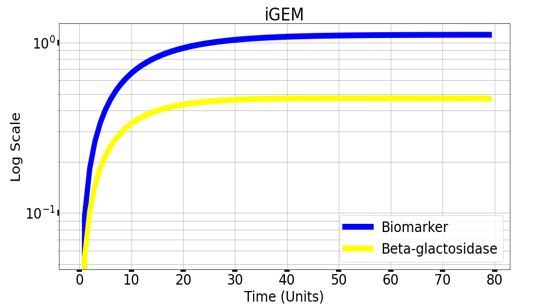Part:BBa_K4140023
Sensing Device
Part Description
TyrR, a DNA-binding protein, controls the biosynthesis of Phe and Tyr in E. coli. TyrR substantially stimulates the expression of lacZ alpha by activating the TyrP promoter in the presence of Phe and ATP or Beta-galactosidase in the diagnostic circuit instead of PAH. And the ParoF promoter regulates the expression of L7Ae. When Tyr levels are high, a TyrR dimer self-assembles to create a hexamer that inhibits ParoF and limits the production of L7Ae.
Usage
This composite system responsible for sensing the levels of phenylalanine and tyrosine within E-coli fixed on our LFA and and performing an appropriate response for the variable levels of phenylalanine and tyrosine
So incase of high levels of phenylalanine tyrR is expressed and regulated by t7p promoter and present in the form of dimer to induce both paroF to express l7Ae and tyrP promoter to express alpha domain of lacZ (our reporter protein) the alpha complementation is detected by the cleavage of X-gal to a deep blue color product as shown in figure 1.

Figure 1. (shows the sensing circuit in our whole cell-based biosensor.)
Characterization by mathematical modeling
We are using mathematical modeling to detect the increased level of phenylalanine (phe) in phenylketonuria patients in our diagnostic platform. It depends on a whole cell-based biosensor through a cascade of reactions to finally end by formation of β-galactosidase that turns the color into blue once bound to its substrate (X-gal) as mentioned in figure (2) and graph (1).

Figure (2) represents the cascade of reactions in whole cell-based biosensor model.

Graph(1) illustrates a direct relation between biomarker and beta-galactosidase ,so as the biomarker increases, the released amount of beta-galactosidase increases till it reaches constant value after about 30 time units. Therefore, the maximum amount of the biomarker releases the maximum amount of beta-galactosidase.
Experimental Characterization
This figure shows an experimental characterization of this composite part as it's validated through gel electrophoresis as it is in lane 6 (the last one).
Sequence and Features
- 10COMPATIBLE WITH RFC[10]
- 12COMPATIBLE WITH RFC[12]
- 21INCOMPATIBLE WITH RFC[21]Illegal BglII site found at 771
Illegal BglII site found at 1113 - 23COMPATIBLE WITH RFC[23]
- 25INCOMPATIBLE WITH RFC[25]Illegal AgeI site found at 577
- 1000COMPATIBLE WITH RFC[1000]
| None |

